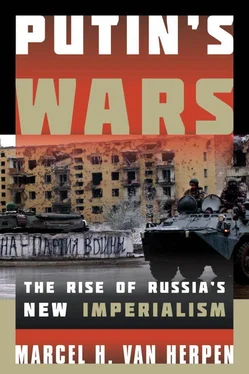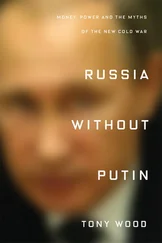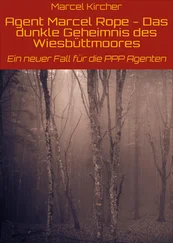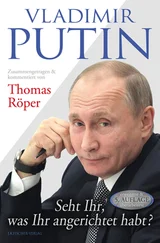However, these social reforms were less inspired by a genuine concern for the situation of the exploited Russian muzhik , as by the geopolitical needs of the Russian empire. Walter Pintner rightly remarked that it was “Russia’s military requirements [which] dictated major social changes.” [15] Pintner, “Russian Military Thought,” 362.
A similar situation arose in 1905 after the defeat in the war against Japan. This defeat led to a revolution and subsequently to the formation of the first parliament, the State Duma in Saint Petersburg. Another lost war: the defeat of the tsarist army in the First World War gave birth to the February Revolution of 1917 that laid the foundation for a Western-style democracy. Unfortunately, at the end of the same year the fragile democratic government of Kerensky was swept away by the Bolsheviks, who installed an autocratic and totalitarian system that endured for the next seventy years. Although during the communist era Khrushchev’s rule brought a short period of cultural “thaw” after Stalin’s death, it did not bring internal democratization, and one had to wait until 1989 before the autocratic communist system began to crumble.
THE HIGH EXPECTATIONS OF 1989
When this finally happened expectations were high. At last Russia would take its rightful place amongst the ranks of the democratic countries of Europe. At last it would build a viable Rechtsstaat with an independent judiciary and abolish the almost inborn fear that the police and secret services instilled in Russian citizens. Inside, as well as outside, Russia there was a sense of relief: finally Russia would become a “normal” country. Western powers were so eager to let this transformation happen that they offered Russia access to democratic forums even before Russia had shown itself worthy of this honor and had acquired the necessary democratic credentials. Rather prematurely Russia was invited to the G7 meetings (renamed G8) and became a member of the Council of Europe. In retrospect this early embracing of a new democratic Russia was too optimistic and too hasty, granting Russia a position among the democratic nations it did not yet deserve. [16] As concerns Russia’s membership of the G-8, even Moscow’s mayor and 1999 presidential hopeful, Yury Luzhkov, remarked: “Its [Russia’s] full membership of the ‘Big Eight’ is obviously also a self-deceit.” Luzhkov, however, was here not so much referring to Russia’s deficient democratic credentials, as to its insufficient economic potential. (Y. M. Luzhkov, The Renewal of History: Mankind in the 21st Century and the Future of Russia (London: Stacey International, 2003), 151–152).
It was as if the West, by granting Russia the status of a fully fledged democratic state, wanted to invoke a “democratic spirit,” hoping that Russia, having been accepted as a member of the club, would automatically behave as a member of the club.
A few critical voices in the West warned against too much optimism. One of them was Zbigniew Brzezinski. “Unfortunately,” he wrote as early as 1994, “considerable evidence suggests that the near-term perspectives for a stable Russian democracy are not very promising.” [17] Zbigniew Brzezinski, “The Premature Partnership,” Foreign Affairs 73, no. 2 (March/April 1994), 71.
Brzezinski was right. It did not take long, indeed, before the West grew disappointed. After the chaotic, but democratically still promising decade of the 1990s under Yeltsin the Russian spring turned into a chilly winter. While the façade of a multiparty democracy was kept in place, elections were falsified and stolen, corruption was rampant, democratic freedoms were trampled upon, journalists, lawyers, and human rights activists were killed, the judiciary lacked independence, and not the people, but the spymasters of the KGB—rebaptized into FSB—became the country’s supreme masters. Despite Medvedev’s repeated mantras on modernizatsiya , it was not the modernization of the country, but its own self-perpetuation that was the real objective of the regime.
Three times—in 1856, 1905, and 1917—modern Russia had tried to reform itself after a lost war. Three times it failed. The only enduring success was the abolition of serfdom by tsar Alexander II. After the end of the Cold War it had—probably for the first time in its history—a real chance to join the democratic mainstream. Unfortunately, Russia missed this unique historical opportunity. Russian despotism could be likened to a mythical monster: every time it lies down on the ground and appears finally defeated, it rises to power again. This despotic nature of the Russian polity is not only a problem for the Russian population, its immediate victim, but also for the neighboring peoples, and—ultimately—for the whole world. The reason for this is that Russian despotism is intimately linked with Russia’s imperial drive.
THE FOUR ROOTS OF RUSSIAN IMPERIALISM
This “eternal” Russian imperialism has four origins:
1. Russia’s geographical position
2. Russia’s economic system
3. Russia’s expansionist tradition
4. A deliberate expansionist policy conducted by the Russian ruling elite
Historically it was Russia’s geographical position, near Siberia—a huge and almost empty space—that made expansion easy. This was a great advantage for Russia compared with the countries of mainland Europe that competed for territorial expansion in an area where land was scarce. Russia’s opportunities for territorial expansion were enhanced after Ivan III (The Great), who reigned from 1462 to 1505, had succeeded in driving the Mongols back. Under his grandson Ivan IV (The Terrible), who reigned from 1547 to 1584, Russia—as if driven by a horror vacui —started to conquer the vast expanses of Siberia. Within a century the Russians had reached the Pacific. They did not stop there, but crossed the Bering Strait and went on to conquer Alaska. In the early nineteenth century Russian colonists went as far as California, where, in 1812, they founded Fort Ross north of Bodega Bay on the Pacific coast, just above San Francisco. [18] Daniel Headrick contrasts this smooth, swift, and easy conquest of Siberia by the Russians with the slow conquest of its Western frontier by the young United States, where, due to the fierce resistance of the Native American tribes, “the conquest was slow, difficult, and costly” (Headrick, Power over Peoples , 277). “The contrast with the Russian expansion into Siberia is striking,” wrote Headrick. “In the 1590s, Russia was confined to the west of the Ural Mountains. By 1646, Russian explorers and fur traders had reached the eastern edge of Siberia and had founded Okhotsk off the sea of that name and Anadyrsk in northeastern Asia. By 1689—after only a hundred years—Russia controlled almost all of Siberia to the Pacific Ocean, 3,500 miles from European Russia” (Headrick, Power over Peoples , 278).
According to the American geopolitician Nicholas J. Spykman, “It was fair to assume that if the grip of Spain in California ever weakened, Russia would be eager to take her place.” [19] Nicholas J. Spykman, America’s Strategy in World Politics: The United States and the Balance of Power , with a new introduction by Francis P. Sempa (New Brunswick: Transaction Publishers, 2008), 69.
However, Russian territorial expansion into the South, the West, and the North was less easy. Here it was less pull factors of an easy expansion than the push factors of a deliberate imperialist policy that prevailed.
An important push factor for Russia’s imperial expansion was Russia’s economic system . It was based on agriculture in feudal properties, and the labor force consisted largely of serfs. This agriculture was not capital-intensive, as was mostly the case in Western Europe, but coercion-intensive . [20] Cf. Charles Tilly, European Revolutions, 1492–1992 (Oxford: Blackwell, 1995), 31.
This meant that it was neither innovative nor efficient and rendered only marginal profits to the landlords who disposed of two methods only to raise their profits: increasing the exploitation of the serfs or adding new land. Because the exploitation of the serfs could not be increased beyond certain physical limits, this led to a continuous search for new land and territorial expansion. This tendency was reinforced by the fact that “the Russian state took shape in a capital-poor environment.” [21] Charles Tilly, Coercion, Capital, and European States, AD 990–1992 (Oxford: Blackwell, 1994), 140.
The state simply did not have enough money to pay or reward faithful servants of the state and successful military commanders. “[T]he logic of warmaking and statemaking in a region of little capital led rulers to buy officeholders with expropriated land,” [22] Tilly, Coercion, Capital , 141.
and with newly acquired land. The two above-mentioned factors led to Russia developing a tradition of territorial expansion from an early stage. Territorial expansion became, as it were, the normal “way of life” of the Russian state. It was like an organism that grows and grows and continues to grow until it has reached its full size, preordained by its biological nature. But unlike an organism, Russia did not have a genetically preordained “normal size.” It could go on and on, growing beyond any limit. And in a certain sense that was what happened. According to Colin Gray, territorial expansion was “the Russian way,” just as it has been “the Soviet way.”
Читать дальше












